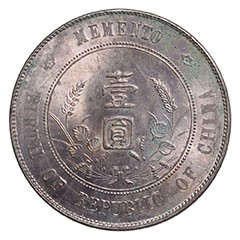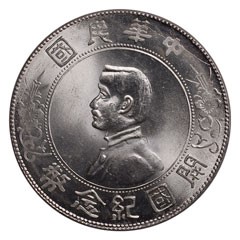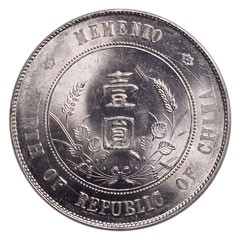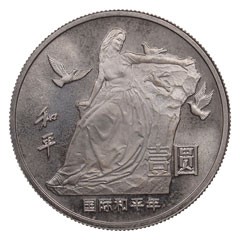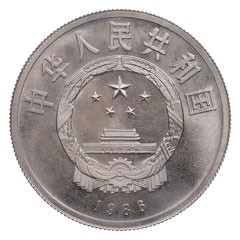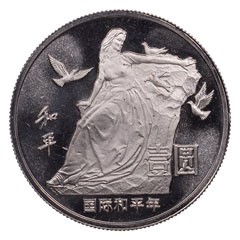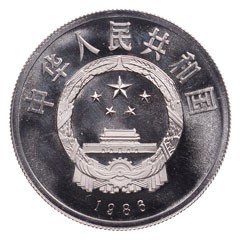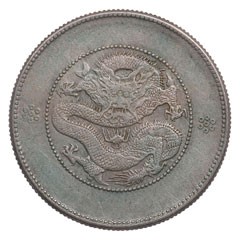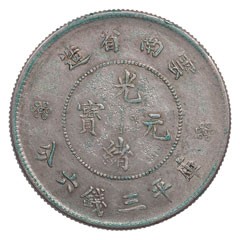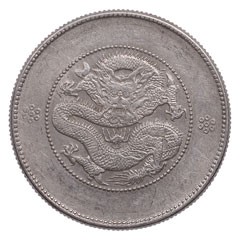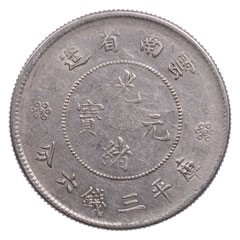NCS Conservation: Three Chinese Coins Benefit from Careful Residue Removal
Posted on 11/8/2022
Numismatic Conservation Services™ (NCS®) uses a variety of proprietary techniques to remove harmful contaminants, stabilize and protect a coin's surfaces and, in many cases, improve a coin's eye appeal. After coins are conserved by NCS, they are seamlessly transferred to Numismatic Guaranty Company™ (NGC®), an independent affiliate of NCS, for grading and encapsulation.
Below are a few highlights of coins that were recently conserved by NCS and graded by NGC.
Poor long-term storage can lead to the development of very ugly residues. This China 1927 Memento Dollar was recently submitted for NCS conservation after the appearance of a heavy opaque green residue. Given the color and texture, the most likely culprit for this residue development is long-term storage in a coin holder containing PVC, such as a soft flip.
Care must be taken when removing PVC residue from such otherwise pristine coins as to not damage the surfaces underneath. Even the pale lavender toning on the reverse was able to be retained through the conservation process. The PVC residue can lead to permanent surface corrosion but luckily with this large silver coin, the PVC residue had not permanently damaged the coin surface. This coin was able to grade very well with NGC following conservation.
Modern coins can suffer with the development of potentially damaging and unattractive residues due to poor long-term storage methods. This China 1986 1 Yuan issued in honor of the International Year of Peace was submitted with heavy opaque residues that are obscuring the surface. Heavy residues such as this can cause permanent damage. With careful conservation work this modern commemorative nickel alloy coin was revealed to be bright and lustrous with little permanent damage caused by the residue. This coin was able to grade well with NGC following the professional conservation.
Long-term storage in coin holders containing PVC can cause damaging residues. This China Yunnan Province undated, though attributed to 1911-15, silver 50 Cent was recently submitted to NCS to remove a bright green residue that had developed both on the obverse and quite starkly on the high points of the reverse of the coin. Bright sticky green residues such as we see on this Chinese provincial silver coin are most often due to long-term storage in PVC holders and can begin the process of corrosion. After all residues were carefully removed, this circulated silver coin was revealed to be a bright white example. Following professional conservation this coin was able to grade numerically with NGC.
For more information about NCS, visit NGCcoin.com/NCS.
Interested in reading more articles on NCS Conservation? Click here.
Stay Informed
Want news like this delivered to your inbox once a month? Subscribe to the free NGC eNewsletter today!

